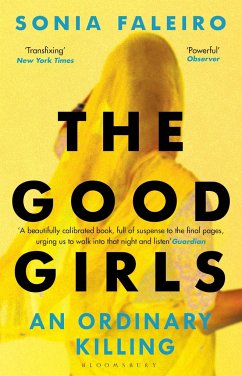Padma and Lalli, inseparable cousins and friends, were only 16 and 14 when they were killed. As their small village in Uttar Pradesh was rather underdeveloped in hygienic and housing terms, the girls needed to go to the nearby fields to relieve themselves. One night in 2014, they went missing and
were found hanging in the orchard a couple of hours later. Rumours spread fast about what might have…mehrPadma and Lalli, inseparable cousins and friends, were only 16 and 14 when they were killed. As their small village in Uttar Pradesh was rather underdeveloped in hygienic and housing terms, the girls needed to go to the nearby fields to relieve themselves. One night in 2014, they went missing and were found hanging in the orchard a couple of hours later. Rumours spread fast about what might have happened and who could be responsible for their deaths, however, even though national media became interested in the case, investigations took their time and the police only reluctantly tried to solve the case. Girls from lower classes have never been high priority and their death seemed to cause more nuisance than alarm.
“This negligence contributed to an epidemic of missing and exploited children, many of them trafficked within and outside the country.”
Sonia Faleiro’s book is a true crime account of how the girls’ lives might have looked like in their last hours, the immediate reaction of the families and villagers and also a lot of facts which help to understand the circumstances in which this crime could take place. The subheading “An Ordinary Killing” already gives away a lot: the murder of girls and women had become to ordinary in India that people didn’t bat an eyelid anymore. However, the events of 2012, when a student was violated in a bus, made worldwide headlines and stirred protests which finally made people aware of the hostile and misogynist climate they were living in.
“Although Delhi was notoriously unsafe, stories about sexual assault didn’t often make the news.”
There are a lot of factors which enabled the murder of Padma and Lalli, their status as girls, their belonging to an inferior class, the remoteness and backwardness of their village – many standards and rights we in the western world take for granted simply do not apply there. But it is not only the crime itself which is abhorrent, also the situation of the police – understaffed, ill-equipped, prone to bribery – and even more of the medical examiner – without any training, just doing the job because nobody else would do it with the logical result of a post-mortem which is simply absurd – are just incredible.
What I found most interesting was actually not the girls’ story and the dynamics in the village afterwards but the background information. Sonia Faleiro convincingly integrates them into the narrative which thus becomes informative while being appealing to read. I’d rather call it a journalistic piece of work than








